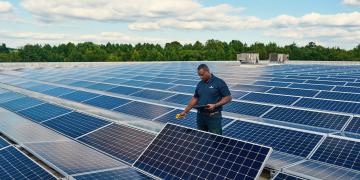Superfast Internet
The Future is 10G
Over the past decade, America has embarked on a technology transformation powered by constant connectivity. Today, most Americans have access to high-speed internet networks that have changed the way we live, work, learn and play. But ensuring that the U.S. remains a global internet leader means that our networks have to stay ahead of demand. We are transitioning from an era defined by megabits to one in which gigabit connectivity is unleashed. Thanks to technologies already being deployed and some coming soon, that future — one of lower latency, greater capacity and reliability and even 10 gigabit speeds — is just around the corner.
Internet Speeds Are Rising
Most of America already has access to home internet speeds of 1 Gigabit per second (Gbps) via cable’s broadband networks. Millions of miles of fiber-rich broadband networks have been deployed over the last several decades, powering our video and broadband internet experiences. New technologies have dramatically improved the ability to transfer data at a much higher rate. In the future, further development and deployment of these technologies will enable the same networks to deliver 10 Gigabit speeds in the coming years.
The Path To Gigabit Internet
10G: The Broadband Network of the Future
10G is the broadband platform of the future that will deliver improved capacity and reliability, lower latency and faster speeds across a broad population of customers, not just the select few at the end of some companies’ individual fiber builds. With upgraded power and capacity, 10G will enable creators and innovators to fulfill their dreams while providing reliability and security.
Capacity and Reliability
Seamless Connectivity
With new advancements, downloading or streaming large files can happen in your home or on the go, thanks to the seamless connection 10G networks will bring. As so much data moves across the network, fiber optic technologies will enable the current cable infrastructure to manage increased internet traffic far into the future — saving energy and cost, while doubling capacity. Also, advancements to Wi-Fi technologies will improve consumer connectivity so they can move freely around cities without experiencing any gap in connection.

Virtual Reality

Online Gaming

Remote Work
Gigabit Broadband Across the Country
Gigabit speeds are already here, and many cable ISPs have rolled out service across the country. Gigabit availability has increased significantly, and that's especially important given today's consumer demand for networks that can deliver advanced technologies like virtual reality, augmented reality, artificial intelligence, and 4K streaming (and soon, 8K). And more importantly, cable companies have begun to deploy the 10G platforms that offer faster speeds today, and will evolve and continue to transform Internet services now and in the future – and eventually offer the 10 gigabit speeds of the future.











